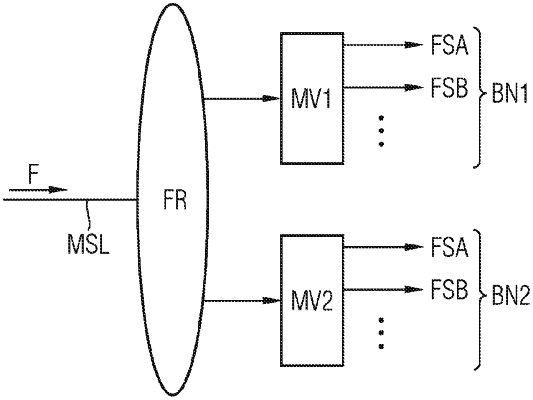| CPC F23N 5/003 (2013.01) [F02D 41/1405 (2013.01); F23N 2223/04 (2020.01); F23N 2223/40 (2020.01); F23N 2223/48 (2020.01); F23N 2237/02 (2020.01); F23N 2241/20 (2020.01); F23N 2900/05006 (2013.01)] | 13 Claims |

|
1. A method for controlling a combustion engine with multiple burners, the method comprising:
a) recording burner-specific combustion measurement data for a respective burner, each respective burner being assigned a burner identifier that identifies the respective burner;
b) recording performance measurement data of the combustion engine which is used to determine a performance value;
c) training a machine learning model using the burner-specific combustion measurement data, the assigned burner identifiers and the performance measurement data, to generate burner-specific control data that optimize the performance value when the multiple burners are actuated using the burner-specific control data; and
d) outputting the burner-specific control data generated by the trained machine learning model to actuate the multiple burners;
wherein the machine learning model comprises multiple submodels which are specific to respective burners and which each generate the burner-specific control data for the respective burners.
|
|
13. A computer program product, comprising a computer readable hardware storage device having computer readable program code stored therein, said program code executable by a processor of a computer system to implement a method comprising:
a) recording burner-specific combustion measurement data for a respective burner, each respective burner being assigned a burner identifier that identifies the respective burner;
b) recording performance measurement data of the combustion engine which is used to determine a performance value;
c) training a machine learning model using the burner-specific combustion measurement data, the assigned burner identifiers and the performance measurement data, to generate burner-specific control data that optimize the performance value when the multiple burners are actuated using the burner-specific control data; and
d) outputting the burner-specific control data generated by the trained machine learning model to actuate the multiple burners;
wherein the machine learning model comprises multiple submodels which are specific to respective burners and which each generate the burner-specific control data for the respective burners.
|